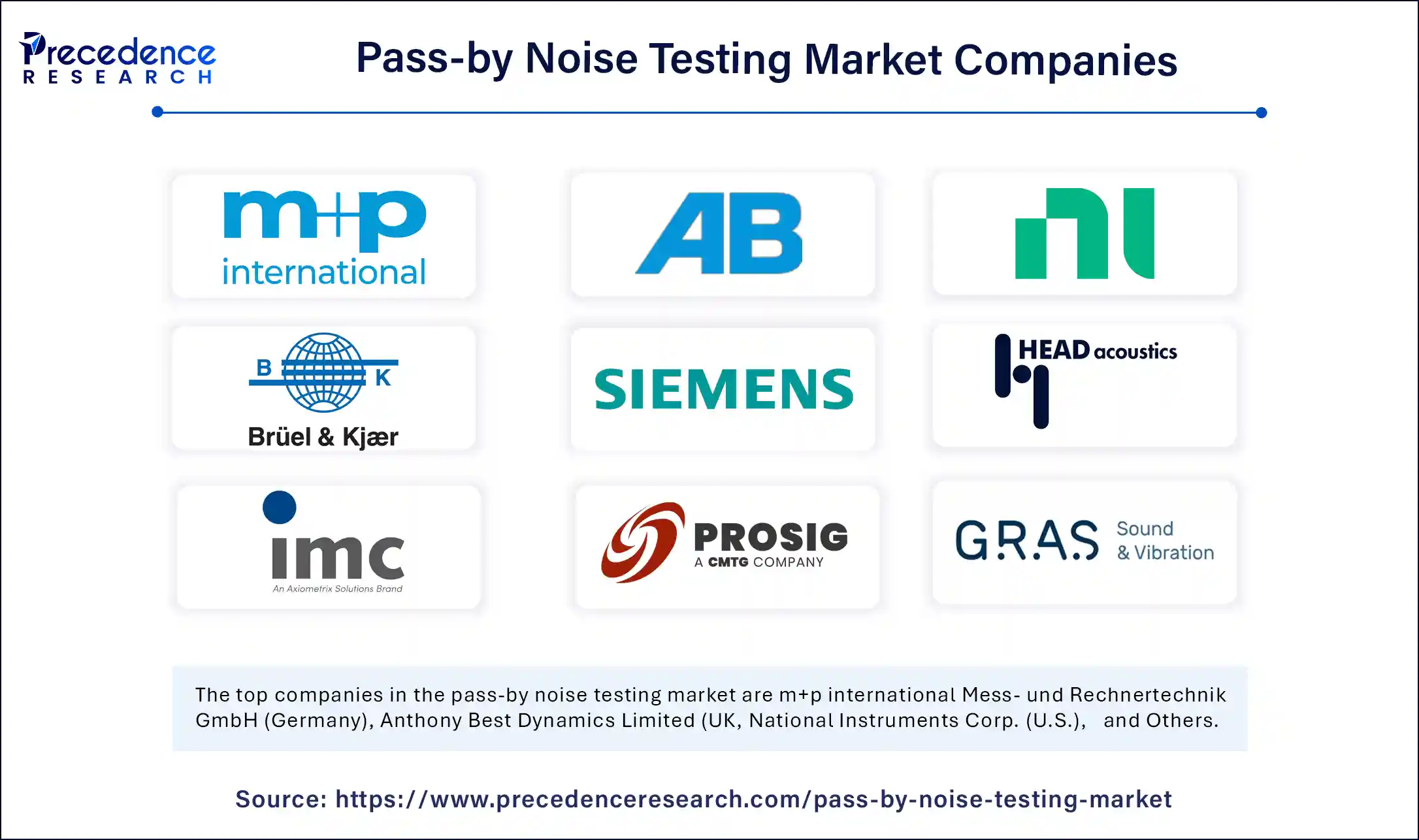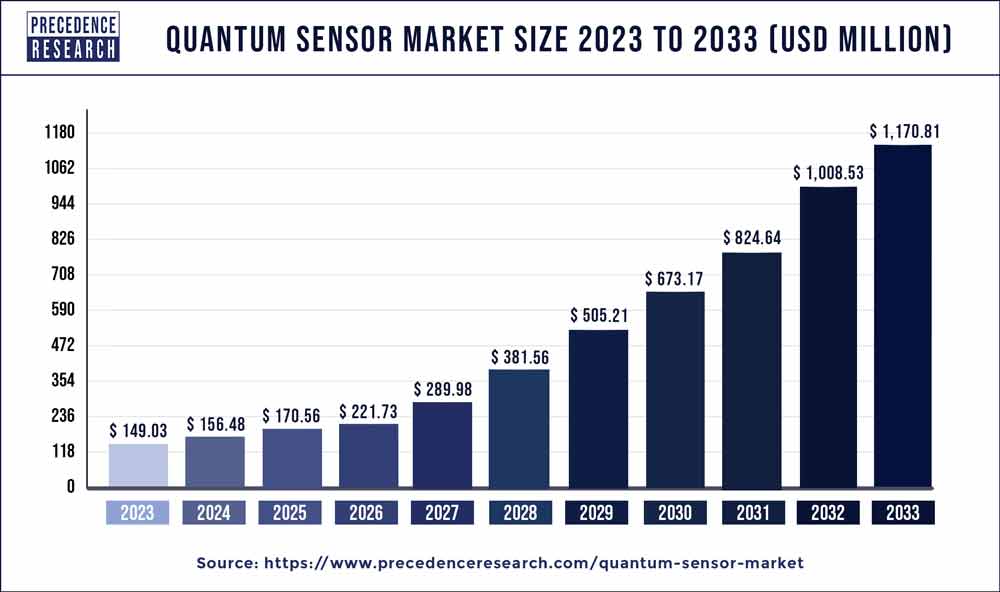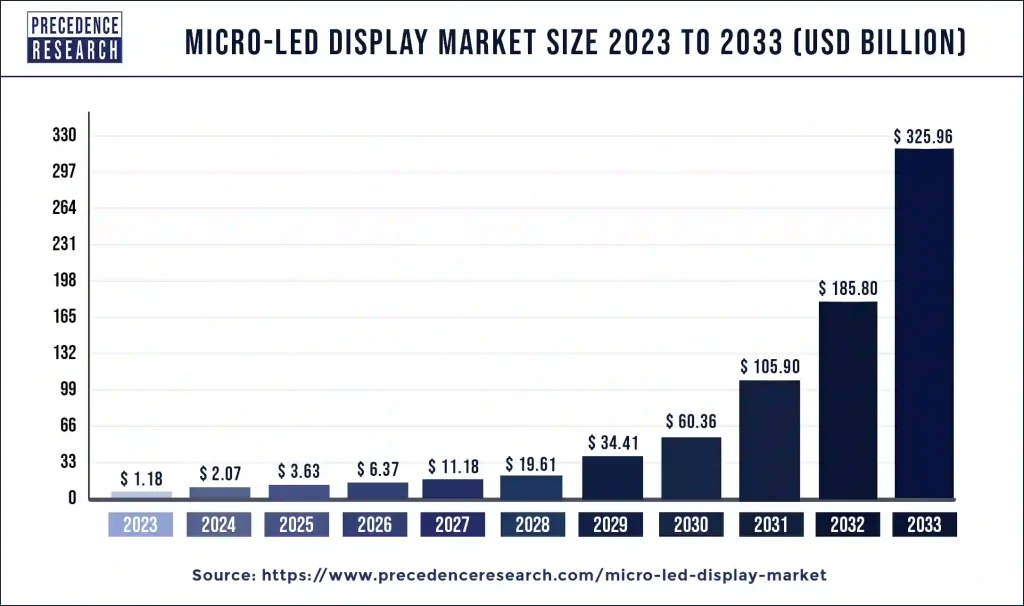Pass by Noise Testing Market Size and Growth
Pass-by Noise Testing Market Key Takeaways
-
North America held the largest market share of 34% in 2024.
-
Asia Pacific is expected to grow at a significant CAGR during the forecast period.
-
By component, the hardware segment led the market in 2024.
-
The software segment is anticipated to grow at the fastest rate between 2025 and 2034.
-
By testing type, the outdoor pass-by noise testing segment accounted for 61% of the market share in 2024.
-
The indoor simulated testing segment is projected to grow at a solid CAGR over the forecast timeline.
-
By end-use industry, the automotive & transportation segment held the dominant market share in 2024.
-
The aerospace & defense segment is expected to grow at the fastest pace in the coming years.
Pass by Noise Testing Market Overview
The Pass-by Noise Testing Market is gaining significant momentum due to increasingly stringent global regulations and growing public concern about environmental noise pollution. Pass-by noise testing is a standardized process for measuring the noise emitted by a vehicle as it moves past a microphone positioned at a specified distance, simulating real-world conditions. It is a critical procedure in the automotive industry, ensuring compliance with government noise limits and helping manufacturers refine vehicle design for quieter performance. As urbanization accelerates and traffic density increases, governments and regulatory agencies worldwide are enforcing tighter controls on vehicular noise emissions, making pass-by noise testing essential in both development and certification processes.
Automotive manufacturers, test equipment suppliers, and research organizations are heavily investing in advanced pass-by noise testing systems, including mobile setups and semi-anechoic chambers, to meet evolving legislative requirements such as the European Union’s Regulation (EU) No. 540/2014 and the UN ECE R51 standards. Moreover, the transition to electric and hybrid vehicles, which have different acoustic profiles compared to traditional internal combustion engine (ICE) vehicles, has further intensified the need for nuanced, high-resolution noise testing to identify and address new sound sources like tire, road, and aerodynamic noise.
Pass by Noise Testing Market Growth Factors
Several key factors are driving the growth of the pass-by noise testing market. First and foremost, increasingly strict government regulations aimed at reducing noise pollution, particularly in urban areas, are compelling vehicle manufacturers to integrate comprehensive noise testing early in the design and development process. Regulatory bodies in Europe, North America, and parts of Asia are tightening permissible noise thresholds, with enforcement measures that include mandatory compliance testing and penalties for violations.
The shift toward electric and hybrid vehicles (EVs and HEVs) is another significant growth factor. While these vehicles operate with quieter powertrains, the absence of engine noise often amplifies other sources such as tire noise, wind resistance, and mechanical vibrations, necessitating more detailed and sensitive noise testing. Additionally, new regulations in regions like the EU and the U.S. require EVs to emit artificial sounds (AVAS – Acoustic Vehicle Alerting Systems) at low speeds for pedestrian safety, further increasing the need for precise noise testing solutions.
Furthermore, the integration of advanced driver assistance systems (ADAS) and lightweight vehicle structures has introduced new NVH (noise, vibration, and harshness) challenges that pass-by noise testing must account for. As vehicles become more sophisticated and multi-modal, ensuring they remain within noise limits across varying driving conditions fuels market growth.
Impact of AI on the Pass-by Noise Testing Market
Artificial Intelligence (AI) is playing a transformative role in reshaping the pass-by noise testing landscape. One of the most critical applications of AI is in data analysis and noise source identification. Traditional pass-by noise testing generates vast amounts of acoustic and mechanical data that require expert interpretation. AI and machine learning algorithms can now process this data in real-time, isolating specific noise contributors and patterns, which significantly reduces the diagnostic time and enhances decision-making accuracy.
AI is also enabling the development of predictive noise modeling tools. These tools simulate how a vehicle will perform under various acoustic scenarios even before physical prototypes are built. By leveraging historical data, AI can help engineers make proactive design adjustments that minimize noise emissions and ensure compliance during later testing phases.
Moreover, AI is improving the automation of test procedures. Robotic test vehicles, sensor arrays, and AI-powered test benches can perform standardized tests more consistently and efficiently, reducing human error and operational costs. In the context of AVAS systems for EVs, AI is also helping to design and validate synthetic sound profiles that are both regulation-compliant and user-friendly.
Lastly, AI is facilitating remote and cloud-based testing frameworks, allowing manufacturers and regulatory agencies to access and analyze test data across multiple locations, fostering collaboration and speeding up product validation cycles.
Market Drivers
Stricter global regulations and standards for noise emissions from vehicles, especially in Europe, North America, and parts of Asia-Pacific.
Rising urban population and noise pollution concerns, prompting municipalities to enforce local vehicle noise limits.
Proliferation of electric and hybrid vehicles, which introduce new and different sources of operational noise requiring refined testing procedures.
Technological advancements in measurement microphones, data acquisition systems, and mobile testing equipment, which are improving test accuracy and efficiency.
Integration of advanced features like AVAS and lightweight components in vehicles, necessitating more comprehensive acoustic testing strategies.
Opportunities
The pass-by noise testing market presents several growth opportunities:
Emerging markets in Asia-Pacific, Latin America, and the Middle East are increasingly adopting international vehicle noise standards, opening up new demand for testing equipment and services.
Development of AI-enabled predictive testing tools offers significant business opportunities for software vendors and testing service providers.
Expansion into non-automotive sectors, such as testing of off-road vehicles, construction equipment, and drones, which also face growing scrutiny for noise emissions.
Rising demand for modular, mobile, and cost-effective testing setups, particularly among small and mid-sized manufacturers, creates room for innovation and competitive differentiation.
Collaborations between OEMs, research institutes, and regulatory bodies to standardize and streamline testing procedures across geographies offer opportunities for global service partnerships.
Challenges
Despite positive growth indicators, the market faces notable challenges. One of the primary barriers is the high cost and complexity of test equipment and infrastructure, which may limit adoption among smaller manufacturers or in developing regions. Advanced testing systems often require large spaces, specialized environments, and skilled technicians.
Variability in regulations and standards across different regions can complicate testing protocols, requiring manufacturers to perform multiple tests for the same vehicle to satisfy diverse compliance requirements.
The limited availability of skilled professionals capable of handling advanced acoustic data analysis, AI integration, and compliance documentation is another challenge that may hinder adoption of more sophisticated testing approaches.
Additionally, weather and environmental conditions can affect outdoor pass-by testing results, leading to inconsistencies or delays. While indoor and semi-anechoic chambers address this to some extent, they come at significantly higher costs.
Pass by Noise Testing Market Scope
| Report Coverage | Details |
| Market Size by 2034 | USD 2.66 Billion |
| Market Size in 2025 | USD 1.70 Billion |
| Market Size in 2024 | USD 1.62 Billion |
| Market Growth Rate from 2025 to 2034 | CAGR of 5.10% |
| Dominating Region | North America |
| Fastest Growing Region | Asia Pacific |
| Base Year | 2024 |
| Forecast Period | 2025 to 2034 |
| Segments Covered | Component, Testing Type, End Use Industry, and Region |
| Regions Covered | North America, Europe, Asia-Pacific, Latin America, and Middle East & Africa |
Regional Outlook
Europe holds the dominant share in the global pass-by noise testing market, driven by its rigorous regulatory landscape and high automotive innovation standards. The European Union’s environmental directives continue to lead the way globally in setting noise emission limits, pushing both OEMs and test system providers to innovate rapidly. Countries like Germany, France, and the UK are hubs for automotive testing and acoustics R&D.
North America is another key market, particularly the United States and Canada, where federal and state-level environmental noise regulations encourage extensive testing. The region’s robust automotive sector and the emergence of electric and autonomous vehicles contribute to the growing demand for advanced noise measurement solutions.
Asia-Pacific is expected to be the fastest-growing market, propelled by rapid industrialization, increasing vehicle ownership, and evolving environmental policies in countries like China, Japan, South Korea, and India. China’s focus on electric vehicle adoption and localized production of test systems is particularly significant for market growth.
Latin America, the Middle East, and Africa are emerging markets where vehicle noise regulations are beginning to align with global standards. While these regions currently represent smaller shares, the increasing attention to urban noise pollution and environmental health is expected to drive demand for pass-by noise testing systems in the coming years.
Pass-by Noise Testing Market Companies

- m+p international Mess- und Rechnertechnik GmbH (Germany)
- Anthony Best Dynamics Limited (UK)
- National Instruments Corp. (U.S.)
- Brüel & Kjær (Denmark)
- Siemens (Germany)
- HEAD Acoustics GmbH (Germany)
- IMC Test & Measurement GmbH (Germany)
- Prosig Ltd. (UK)
- GRAS Sound & Vibration (Denmark)
- Dewesoft d.o.o. (Slovenia)
- Benstone Instruments USA (U.S.)
- ESI Group (France)
- Thermotron Industries (U.S.)
- Kistler Group (Switzerland)
- IMV Corporation (Japan)
- Econ Technologies, Inc. (U.S.)
- Polytec GmbH (Germany)
Segments Covered in the Report
By Component
- Hardware
- Sensors & transducers
- Analyzers
- Meters
- Data acquisition systems
- Signal conditioners
- Shakers & controllers
- Software
By Testing Type
- Outdoor Pass-by Noise Testing
- Indoor Simulated Testing
By End Use Industry
- Automotive & Transportation
- Aerospace & Defense
- Power Generation
- Consumer Electronics
- Construction
- Industrial Equipment
- Mining & Metallurgy
- Others
By Region
- North America
- Europe
- Asia Pacific
- Middle East & Africa
- Latin America
Also Read: Selective Laser Sintering Market
Get this report to explore global market size, share, CAGR, and trends, featuring detailed segmental analysis and an insightful competitive landscape overview @ https://www.precedenceresearch.com/sample/6089
You can place an order or ask any questions, please feel free to contact at sales@precedenceresearch.com|+1 804 441 9344

